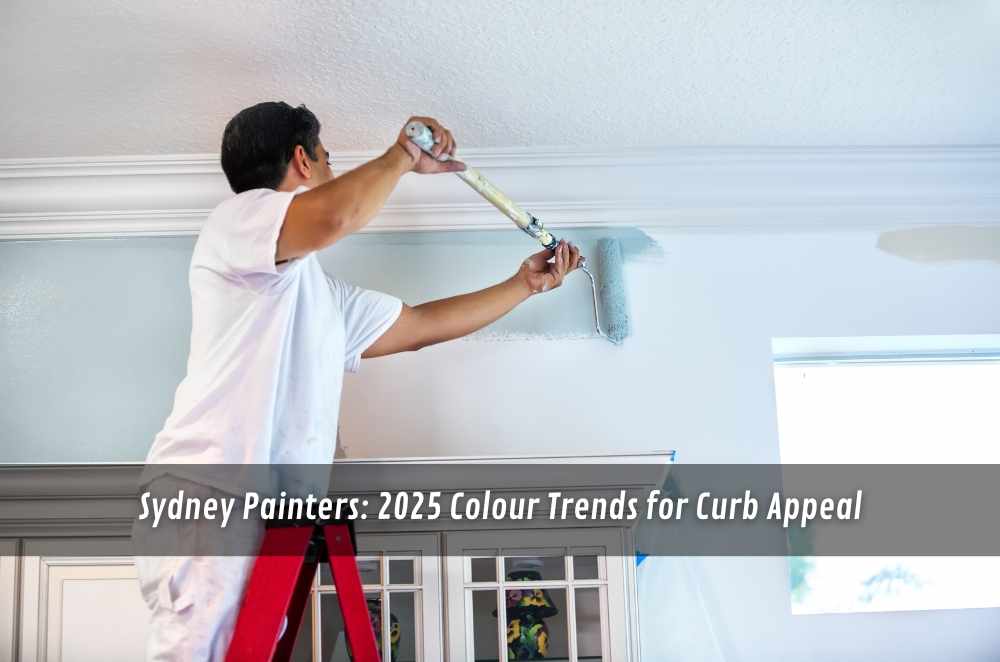
A few streets away from me, there’s an old weatherboard cottage that recently got a full refresh. The colour’s subtle — soft cream with a dusty blue trim — but the real change isn’t what you see, it’s what you don’t smell. No heavy paint fumes, no thinners, nothing clinging to the air. Industry guidelines from organisations such as Taubmans and the Australian Building Codes Board continue to shape sustainable practices in the trade, with companies providing house painting services in Sydney, including Mi Painting & Maintenance, applying these standards as part of their routine work.
It’s part of a bigger shift I’ve noticed around town. People aren’t just picking colours anymore. They’re thinking about how paint affects their health, the air inside their home, and the planet outside it. Sure, a paint job can make a place look sharp, but now it’s also a chance to reduce toxins, cut waste, and do a bit of good for the environment. And that’s not marketing spin — it’s just the way the trade’s moving.
Why professional standards matter in sustainable painting
Green products on their own don’t guarantee a good result. A painter’s approach — from prep work to disposal — plays a huge role. That’s where the NSW painting licence requirements step in. These rules set a baseline for safety, workmanship, and environmental responsibility across New South Wales.
From what I’ve seen, the difference between a licensed and unlicensed painter is night and day. A licensed professional is more likely to:
Choose paints that meet strict environmental and safety criteria.
Use cleanup methods that prevent chemicals from entering waterways.
Prepare surfaces properly so the finish lasts longer.
I once watched a team scrape back layers on a heritage facade without disturbing the garden below. They had tarps, vacuum sanders, and waste bins ready to go. It took longer, but the end result was spotless — and nothing harmful ended up in the soil.
Practical benefits of timing your interior projects
Products matter, but so does timing. In my own place, I learned this the hard way after painting a hallway during a heatwave. The paint skinned over before it had a chance to level, leaving faint roller marks. Later, a friend explained the interior painting benefits, and it made sense.
Cooler, more stable conditions indoors can:
Help paint dry evenly without trapping moisture.
Reduce the need for strong ventilation when using low-VOC products.
Give painters a more forgiving window to tackle detailed work.
I tried it the following year with a bedroom refresh. The finish came up smooth, and I didn’t have to sleep with every window open for days. Timing didn’t just make the job easier — it improved the result.
Eco-friendly exterior painting strategies
When it comes to the outside of a home, sustainable painting has its own set of challenges and rewards. Exterior work faces weather, UV rays, and pollution — all of which can shorten the life of a paint job if handled poorly. The key is to approach it with both durability and environmental care in mind.
Some effective strategies I’ve seen work well include:
Using weather-resistant low-VOC paints designed to withstand harsh Australian sun.
Selecting lighter colours to reflect heat and reduce cooling needs indoors.
Cleaning and prepping surfaces with biodegradable solutions instead of harsh chemicals.
Scheduling painting during mild, dry weather to avoid wasted materials from failed applications.
I remember a coastal project where the painter chose a heat-reflective paint to cut down the homeowner’s energy use. The finish not only lasted longer but also kept the interior cooler without changing the style of the home.
The bigger picture for Aussie homes
This shift toward sustainable painting isn’t a fad. It’s tied to bigger trends — healthier homes, better air quality, and long-term cost savings without cutting corners. I’ve noticed more suppliers stocking low-tox paints as standard, and tradespeople are picking up eco-friendly habits without even labelling them as such.
In practice, that might look like:
Swapping single-use drop sheets for reusable canvas.
Cleaning tools with minimal water waste.
Choosing locally made products to cut transport emissions.
It’s not about perfection. It’s about stacking small, sensible choices that, over time, make a real difference.

Recognising when it’s time for a refresh
Even the most durable eco-friendly paint won’t last forever. Weather, sunlight, and plain old wear all leave their mark. Over time, you might start noticing signs your home needs repainting, small flakes along the edges, colour that’s dulled from its original tone, or surfaces that feel powdery when touched.
Addressing these issues early makes a difference:
Minor touch-ups use fewer materials than a full repaint.
Early repairs stop moisture from damaging walls or trims.
Keeping paint in good condition helps protect underlying surfaces.
I once saw a coastal home where the salt air had faded the exterior in just a few years. Acting quickly meant the owners could restore the look without stripping everything back to bare timber.
Final thoughts
The best painting jobs are the ones you barely notice after the first week — no lingering smell, no early cracking, no guilt about what’s gone into landfill. Sustainable methods make that possible, and the right timing and upkeep keep it going.
Whether it’s a quick interior refresh or a full exterior transformation, it’s worth choosing materials and methods that look after both your home and the world outside your front gate. It’s not just about colour on a wall anymore — it’s about the life that wall supports.







Write a comment ...